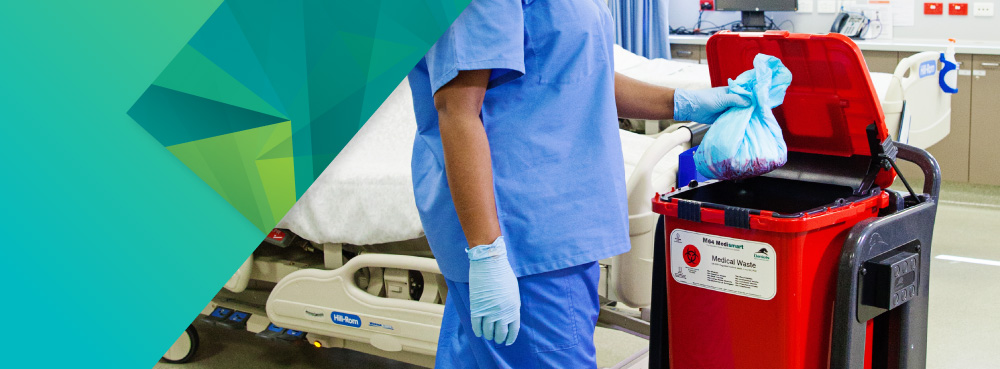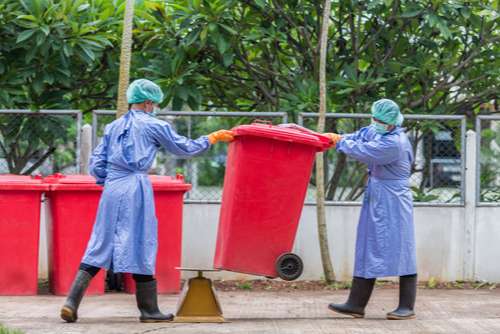Defending Well-Being: Revealing the Significance of Expert Medical Waste Removal
Defending Well-Being: Revealing the Significance of Expert Medical Waste Removal
Blog Article
Stay Ahead of Laws: Specialist Suggestions on Medical Waste Disposal
In a world where the medical care sector is continuously developing, it is important for medical centers to stay in advance of guidelines when it comes to the appropriate disposal of medical waste. From recognizing the different groups of clinical waste to implementing the appropriate collection and segregation methods, this conversation will provide useful insights and workable ideas to aid facilities stay ahead of regulations in the ever-changing landscape of medical waste disposal.
Understanding Clinical Waste Categories
Understanding medical waste categories is necessary for appropriate disposal and monitoring in health care centers. Medical waste describes any waste produced by medical care activities that might pose a danger to public wellness or the atmosphere. It is critical to categorize clinical waste properly to ensure its risk-free handling, treatment, transportation, and disposal.
There are a number of groups of clinical waste that healthcare facilities require to be acquainted with. The most typical groups include infectious waste, pathological waste, sharps waste, pharmaceutical waste, and chemical waste. Each classification has details guidelines and policies for its appropriate monitoring and disposal.
Pathological waste refers to human cells, body organs, or body components that require unique handling and disposal. Drug waste consists of ended, unused, or contaminated drugs that need careful handling and disposal.
Remaining Up-To-Date With Regulatory Adjustments
Remaining present with regulative changes is essential for healthcare centers to make certain conformity and appropriate administration of medical garbage disposal. medical waste removal near me. With guidelines frequently advancing, it is vital for health care facilities to remain updated to prevent charges, fines, and possible damage to the environment and public health
To remain ahead of regulative modifications, healthcare centers must establish a system for surveillance and tracking updates. This can be done by subscribing to regulative newsletters, participating in seminars and workshops, and actively joining market associations. Furthermore, facilities must designate a team member or team liable for staying educated and disseminating details to relevant stakeholders.
Routine interaction with regulative firms is likewise vital. Healthcare centers should establish partnerships with local, state, and federal firms to ensure they recognize any kind of changes in guidelines that might impact their waste administration techniques. This can be done through routine conferences, engagement in public comment periods, and positive engagement with regulative firms.
Additionally, medical care facilities need to think about partnering with waste management business that specialize in clinical garbage disposal (medical waste disposal services with WasteX). These firms are often skilled in the current laws and can provide assistance and support to make sure conformity
Applying Correct Collection and Partition Approaches
To properly manage medical waste disposal, health care facilities need to develop appropriate collection and partition techniques in conformity with regulative standards. Carrying out these approaches makes sure the risk-free handling and disposal of potentially unsafe products, shields the setting, and lessens the danger of injuries and infections to health care workers and the public.
Proper collection and partition approaches entail the usage of assigned containers and labeling systems. Healthcare centers must supply clearly labeled containers for various kinds of medical waste, such as sharps, infectious waste, pharmaceutical waste, and non-hazardous waste. These containers should be color-coded and plainly significant to avoid confusion and advertise simple identification.
In addition, health care facilities should educate their personnel on the correct treatments for gathering and segregating clinical waste. This includes educating them on the various sorts of waste, the ideal containers to make use of, and the significance of following standards and policies. Regular training sessions and correspondence course need to be carried out to ensure that team members continue to be up-to-date on ideal practices.
In addition, health care centers ought to develop a system for routine collection and disposal of clinical waste. This may include partnering with certified waste monitoring business that concentrate on medical waste disposal. These firms will make sure that the collected waste is carried and gotten rid of in conformity with regulatory demands.
Selecting the Right Disposal Techniques

Incineration is just one of one of the most common and effective approaches for dealing with specific types of medical waste, such as look at this web-site pathological waste and sharps. It includes the controlled combustion of waste at heats, minimizing it to ash. Incineration can launch damaging contaminants into the air and contribute to air pollution.

Various other disposal approaches consist of chemical treatment, microwave therapy, and landfilling. Chemical therapy includes making use of chemicals to decontaminate and reduce the effects of the waste. Microwave treatment utilizes microwave energy to warm and disinfect the waste. Landfilling entails burying the waste in a marked landfill location (medical waste disposal services with WasteX). However, landfilling must be the last option due to the potential danger of contamination to dirt and groundwater.
Guaranteeing Compliance With Paperwork and Training
After very carefully taking into consideration the ideal disposal approaches for clinical waste, medical care centers have to make certain conformity with guidelines and lessen ecological effect by carrying out efficient paperwork and training procedures. This step is essential in maintaining a lasting and risk-free atmosphere for both healthcare workers medical waste disposal services with WasteX and the public.

Healthcare workers who handle medical waste should receive appropriate training on waste segregation, handling, and disposal procedures. By providing comprehensive training, healthcare facilities can empower their team to make enlightened choices and decrease the danger of incorrect waste disposal.
Verdict
Finally, remaining in advance of guidelines in medical waste disposal is essential for healthcare centers. medical waste removal. Understanding the various groups of medical waste, staying upgraded with governing modifications, carrying out appropriate collection and segregation methods, picking the proper disposal methods, and ensuring conformity with documentation and training are all essential actions. By complying with these guidelines, medical care organizations can effectively dispose and handle of clinical waste in a liable and risk-free manner
From recognizing the different groups of medical waste to implementing the appropriate collection and segregation approaches, this discussion will certainly offer actionable ideas and important insights to help centers remain ahead of laws in the ever-changing landscape of medical waste disposal. - medical waste disposal services with WasteX
The most common classifications consist of transmittable waste, pathological waste, sharps waste, pharmaceutical waste, and chemical waste. Healthcare facilities should offer clearly identified containers for various kinds of clinical waste, such as sharps, transmittable waste, pharmaceutical waste, and non-hazardous waste. Medical care centers need to develop a comprehensive system to record and track all aspects of medical waste disposal, including types of waste generated, quantities, and disposal methods used. Healthcare employees that take care of clinical waste needs to obtain ideal training on waste partition, taking care of, and disposal treatments.
Report this page